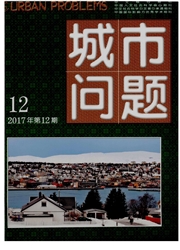

 中文摘要:
中文摘要:
利用2000-2007年全国30个省份的面板数据对城镇化、财政支农与农民收入增加之间的关系进行了实证分析。研究发现,城镇化和财政支农对农民的增收具有明显的促进作用,从长期来看,城镇化的增收效应要大于财政支农;对不同地区而言,城镇化和财政支农在促进农民增收的能力上存在差异。城镇化对农民增收的影响从大到小依次是西部、中部、东部;而财政支农对农民增收的影响则表现为东部大于中部,中部大于西部的特点。财政支农基本不存在对城镇化的抑制效应,在财政支农过程中的基础设施建设反而有助于城镇化发展。在此基础上,提出了通过城镇化和财政支农来促进农民收入增加的政策建议。
 英文摘要:
英文摘要:
This article uses 30 provinces' panel data to analyze the relationship among urbanization,finance expenditure for agriculture and peasant's income growth. The results show that urbanization and finance expenditure for agriculture play an important role in promoting peasant's income growth. On a long view,the effect of urbanization in promoting peasant's income growth is better than finance expenditure for agriculture. For different areas,there is difference between urbanization and finance expenditure for agriculture in promoting peasant's income growth. The effect of urbanization in promoting peasant's income growth from high to low is the west,the middle and the east. The effect of finance expenditure for agriculture from high to low is the east,the middle and the west. Finance expenditure for agriculture will not restrain urbanization basically. In the end,it gives policy recommendations.
 同期刊论文项目
同期刊论文项目
 同项目期刊论文
同项目期刊论文
 期刊信息
期刊信息
